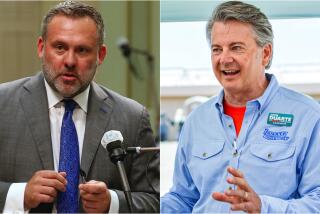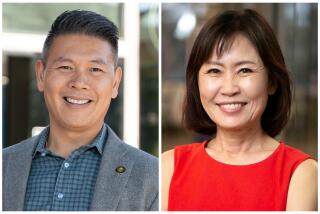Same-party candidates in House races show wide range in fundraising

- Share via
Lopsided fundraising continued to show up in the three fall House races in California between members of the same party, campaign finance documents filed this week showed.
The highest amounts raised in any of the three races were posted in the contentious contest for a Bay Area district where Rep. Mike Honda (D-San Jose) is being challenged by Ro Khanna, a former U.S. Commerce Department official. According to reports due at the Federal Election Commission on Wednesday night, Honda had raised $2.8 million for his campaign and Ro had brought in $4.3 million.
But Khanna raised almost $100,000 less than Honda during the three-month period that ended Sept. 30. And he had far less left to spend in the final weeks of the campaign. Khanna reported $218,000 in cash on hand; Honda reported almost $965,000.
Fundraising discrepancies also continued in the two contests which pit Republicans against one another.
In a Los Angeles County area race, for a seat being vacated by the impending retirement of Howard P. “Buck” McKeon (R-Santa Clarita), former state legislator Tony Strickland has amassed more than $1.5 million and had $391,000 in the bank. State Sen. Stephen Knight (R-Palmdale) reported raising more than $296,000 and had almost $70,000 cash on hand.
In a Northern California district, moderate Republican Art Moore is challenging Rep. Tom McClintock (R-Elk Grove), a longtime conservative icon. Moore, a businessman and military officer, has the support of former Gov. Pete Wilson and has received at least one major newspaper endorsement but has been able to raise just under $146,000 for his campaign. McClintock reported raising $1.4 million, with $644,000 left to spend to Moore’s less than $69,000 cash on hand.
The same-party contests Nov. 4 come courtesy of California’ top two primary system, put into statewide use in 2012. It requires that all candidates for a state or congressional office appear on a single ballot in June and allows only the first-and second-place finishers, regardless of any party affiliation, to advance to the fall general election.
Follow @jeanmerl for the latest in Southern California politics news.
More to Read
Sign up for Essential California
The most important California stories and recommendations in your inbox every morning.
You may occasionally receive promotional content from the Los Angeles Times.













